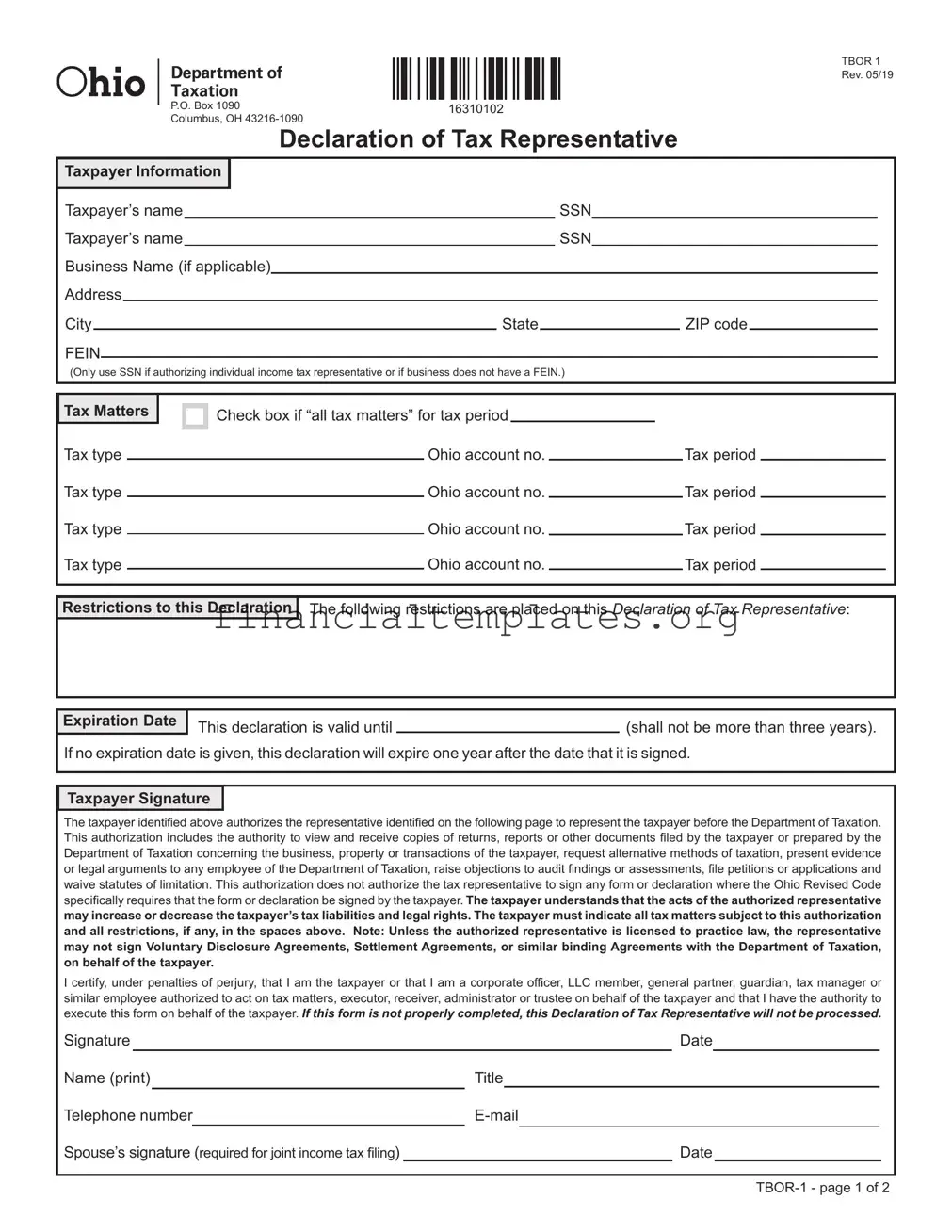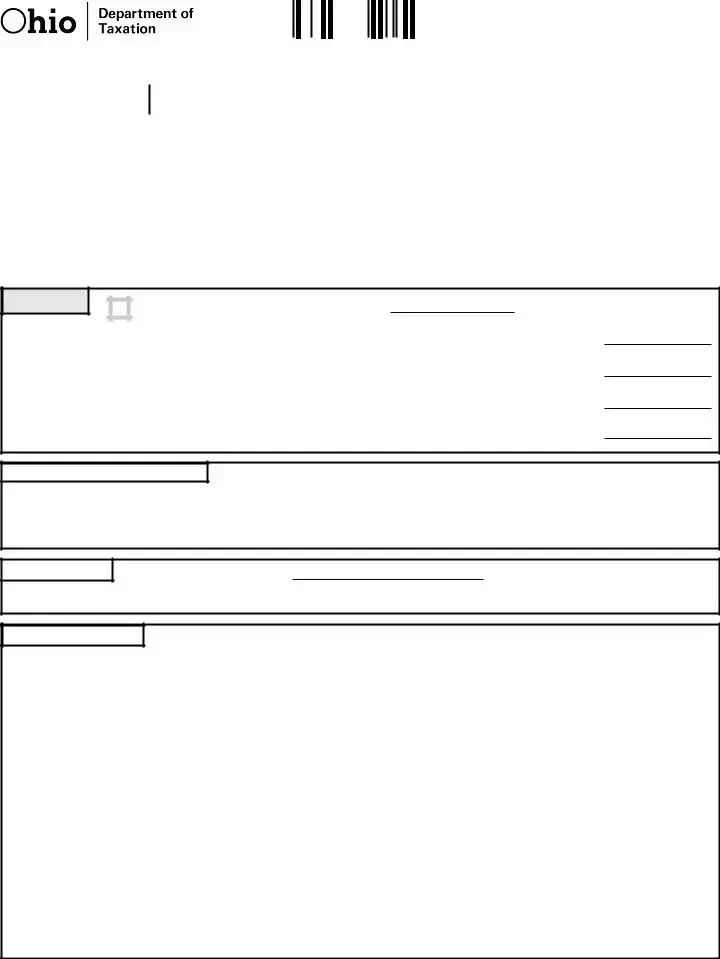The Tax Power of Attorney (Tax POA) TBOR-1 form shares similarities with the General Power of Attorney document. Both forms designate an individual, known as the agent or attorney-in-fact, to make decisions on behalf of the principal. However, while the Tax POA specifically authorizes an agent to handle tax matters with the tax authority, the General Power of Attorney grants broader powers, allowing the agent to manage a wide range of the principal’s personal, financial, and business affairs.
Comparable to the Tax POA is the Healthcare Power of Attorney. This document allows an individual to appoint someone to make healthcare decisions on their behalf should they become unable to do so. Similar in concept—the delegation of decision-making authority—the key difference lies in their areas of focus. The Tax POA pertains to tax matters, while the Healthcare Power of Attorney covers decisions about medical care and treatment.
The Durable Power of Attorney (DPOA) also aligns with the Tax POA in that it grants someone else the authority to act on the principal’s behalf. The distinction between them hinges on the scope and the duration of the powers granted. A DPOA remains effective even if the principal becomes incapacitated, covering a broad range of affairs, unlike the Tax POA, which is limited to tax-related issues and might not include such enduring powers.
Another document with similarities to the Tax POA is the Limited Power of Attorney. This document allows an individual to grant specific powers to an agent for a limited task or period. Like the Tax POA, which is focused solely on tax matters, a Limited Power of Attorney is narrow in scope but can pertain to various tasks outside of tax issues, such as selling a property or managing certain financial transactions.
The Financial Power of Attorney bears resemblance to the Tax POA as both relate to financial matters. Nonetheless, a Financial Power of Attorney provides a broader authorization, enabling the agent to handle a wide range of financial affairs and transactions on behalf of the principal. In contrast, the Tax POA is exclusively concerned with tax-related activities.
Similarly, the Revocation of Power of Attorney document is associated with the Tax POA, as it pertains to the cancellation of power of attorney arrangements. It directly impacts the validity of the Tax POA by providing the legal means to formally withdraw the powers previously granted. This revocation process is crucial for individuals wishing to change or terminate the authority given to an agent under a Tax POA.
The Estate Planning Power of Attorney is another document related to the Tax POA, designed with the future in mind. It enables an individual to appoint an agent to handle matters specifically related to their estate, which may include certain tax considerations. Although focused more broadly on estate management and planning, it often intersects with tax-related issues, similarly empowering an agent to make decisions on the principal's behalf in specific contexts.




 2. Certified public accountant or public accountant – duly qualified practice in the jurisdiction shown below.
2. Certified public accountant or public accountant – duly qualified practice in the jurisdiction shown below.
 7. Other – provide explanation
7. Other – provide explanation